The Best Ergonomic Furniture for Your Office (and Why You Need It)
Our bodies weren't built to sit at a desk on a computer all day. The sedentary lifestyle that most traditional office settings demand is hard on our joints, back and posture, and studies have linked sitting for long periods of time to many health complications later in life.
In order to adapt to this reality, and enhance the comfort of employees, many offices have opted to replace their normal furniture for those specifically designed to improve posture, encourage movement and be gentler on the spine and muscles.
Ergonomic furniture takes a human-first approach to interior design and keeps you feeling your best and staying productive for longer. Here's the case for why your office should make the switch.
What is ergonomic office furniture?
Ergonomic office furniture is designed for and around humans for maximum support and comfort. The way something ergonomic is designed takes into account the way the human body is shaped and built, and how to best support it. Some of the most popular examples are chairs that support your spine, active-sitting alternatives to chairs to keep you moving, keyboards shaped to fit your hands, or convertible desks to support standing while working. All of these products are meant to optimize the safety and efficiency with which we interact with our furniture and appliances. By using them, you can improve your health, productivity and longevity, in the workplace and beyond.
Benefits
There are several benefits of ergonomic design, for both employees and employers. They include:
- Decreased levels of pain and injury. Hunching over a computer for hours hurts after a while. So does sitting on hard, rigid chairs and typing all day. As a result, people who work under typical, 9-to-5 office conditions have regularly developed muscle problems and soreness. Transitioning to furniture that supports wellness and counteracts these problems can help prevent these kinds of injuries, and the claims that can be made against the company because of them.
- Greater employee health and happiness. Sitting for eight hours a day has been linked to many health issues, including heart disease, obesity and cancer. Building in ways to keep employees active and more comfortable when seated improves the health and overall happiness in your work environment.
- Increased levels of productivity. It's easy to get bored sitting in a chair staring at a computer all day. Plus, when people are uncomfortable, they are not at their best in terms of productivity or satisfaction. With office furniture like adjustable desks, active sitting options and more comfortable furniture overall, your office's productivity can improve tremendously.
- A more active lifestyle. A lot of ergonomic furniture pieces build in options to incorporate more dynamic movement into your workday. Standing desks adjust height with the push of a button, so you have the opportunity to work while sitting or standing. Active sitting chairs allow you to move freely while sitting, strengthening your core muscles and your posture.
- Better posture. Good posture is linked to lower levels of stress, increased confidence and greater core and back strength. The great news: you can work on your posture while going about your day at work. The plethora of ergonomic chairs on the market are designed to do everything from instigate core engagement, support the legs and feet and support the natural curvature of the spine, helping you gain better posture and a couple more inches.
7 ergonomic items for your office
To start your ergonomic conversion, here are 7 products you should try to maximize the comfort and mobility of your office space.
1. Standing desk
Jarvis Bamboo Standing Desk – Fully, $449

Flexispot M2B 35" Sanding Desk Converter, Amazon – $280.99
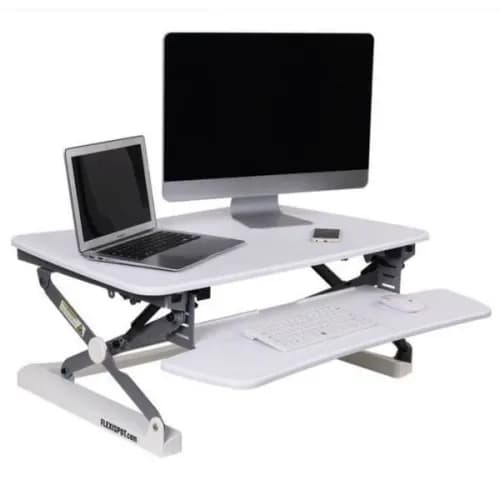
If you get restless during the day, a standing desk may be for you. Don't worry — it's not an irreversible decision. Most standing desks move up and down, either manually or with a motor, so you can decide throughout the day whether you want to sit or stand. And if you're not ready to make the commitment to a full standing desk, opt for a converter that can take any normal desk to the next level. It's usually a cheaper option, too.
In addition to improving energy, productivity and active movement at the office, standing desks can also help your posture. Again, human beings aren't meant to be sitting in chairs all day. Give yourself a break with the option to stand.
2. Motion stool
Motion Stool – UPLIFT Desk, $98
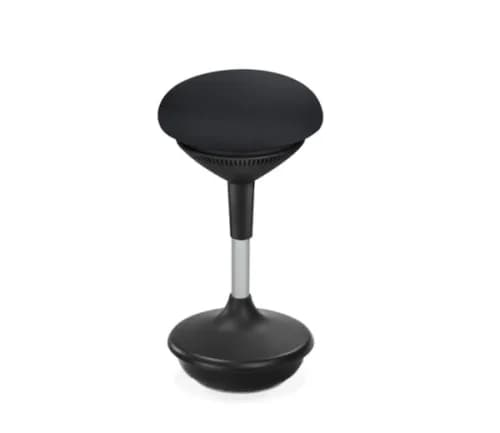
Tic Toc Chair – Fully, $225
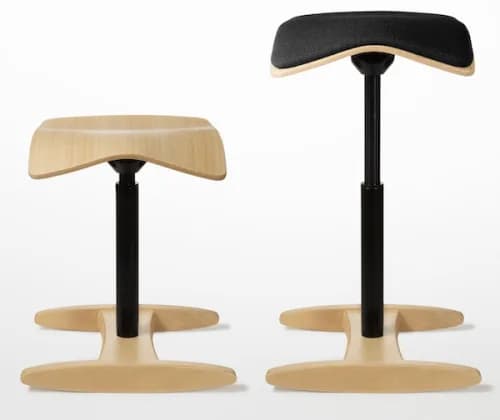
Active sitting, also called dynamic sitting, keeps you from slumping over your desk all day, unmoving. Active sitting options ignite your core and allow you to move and fidget – which helps a lot of people concentrate better. With a motion stool, you have a full range of motion, and the backless design will improve your core muscles and overall posture.
3. Standing desk chair
Flash Furniture Mid-Back Black Mesh Ergonomic Drafting Chair – Amazon, $120.49
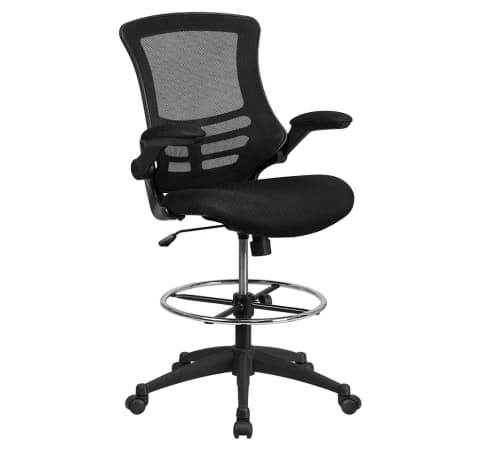
A more classic ergonomic design, this chair supports the natural curve of your spine and lets you rest your feet on the bottom ring to alleviate stress on your lower back. It adjusts in height, so no matter how tall your desk is, you can reach it comfortably.
4. Adjustable keyboard below-desk tray
KT1 Ergonomic Under-Desk Computer Keyboard Tray – Amazon, $80.99
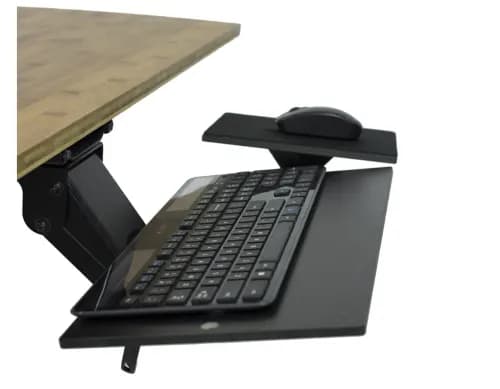
The angle at which we normally type — with our hands and fingers tilting up toward the computer screen, goes against how our bodies are shaped. It strains our wrists and arms to type upwards, with our arms raised to desk height. This under-desk adjustable keyboard tray lets you extend your arms naturally downward and type without over-extending your wrists. It helps to alleviate stress in the hands and any cramps that accompany it.
5. Kneeling chair
Variable Balans by Varier – Fully, $399
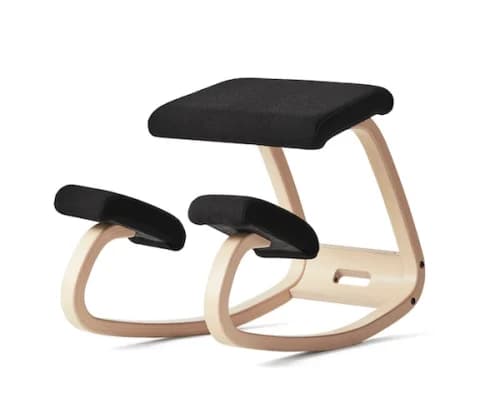
Considered "the original kneeling chair" the design of this kneeling chair encourages movement and supports you through it. Designed to improve posture and alleviate the stress that sitting puts on your back, kneeling chairs offer a unique and different way to incorporate dynamic movement into your day.
6. Ergonomic mouse and keyboard
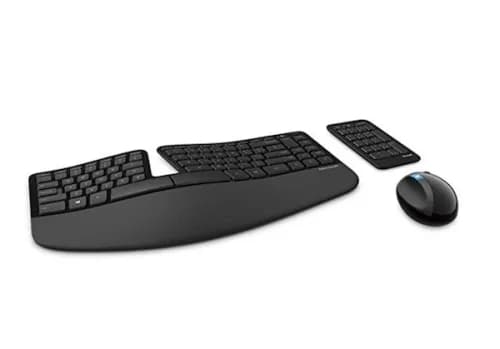
Just as the angle at which our keyboards sit on our desks is not conducive to the way our wrists move, normal, flat keyboards are not optimal for typing. Our hands naturally turn in towards each other and curve in order to type — the same goes for using a mouse. This set curves according to the natural way our bodies do and minimizes muscle strain and over-extension in the wrists and hands.
7. Exercise ball chair
Ballo – Fully, $299
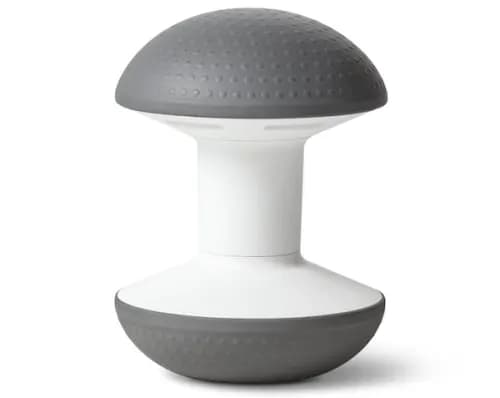
McLean Exercise Ball Chair – Wayfair, $136
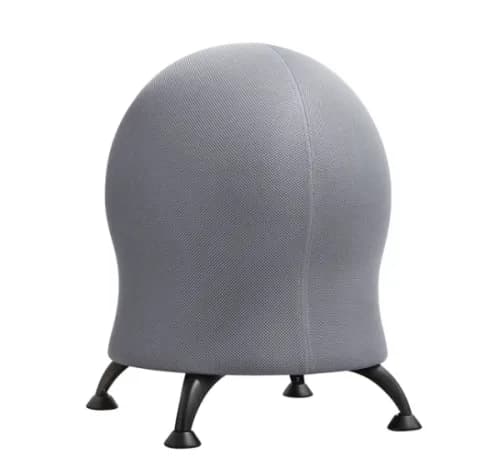
Sitting on an exercise ball has its perks — increased core strength, better posture, a more active workday overall. It also has its downsides, like rolling to the other side of the cubicle as soon as you look away. Level up with these exercise ball chairs that won't run away, but will keep you working your core as you work on your to-do list.
Try out these ergonomic options in your office and see if they work for you. Hopefully, they'll bring a new dynamic into your workplace that will have you feeling energized and productive.
Don’t miss out on articles like these. Sign up!
Why women love us:
- Daily articles on career topics
- Jobs at companies dedicated to hiring more women
- Advice and support from an authentic community
- Events that help you level up in your career
- Free membership, always
